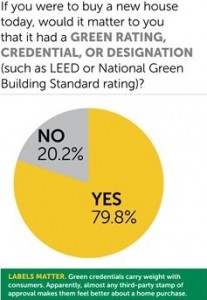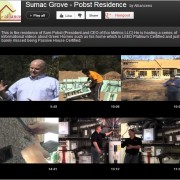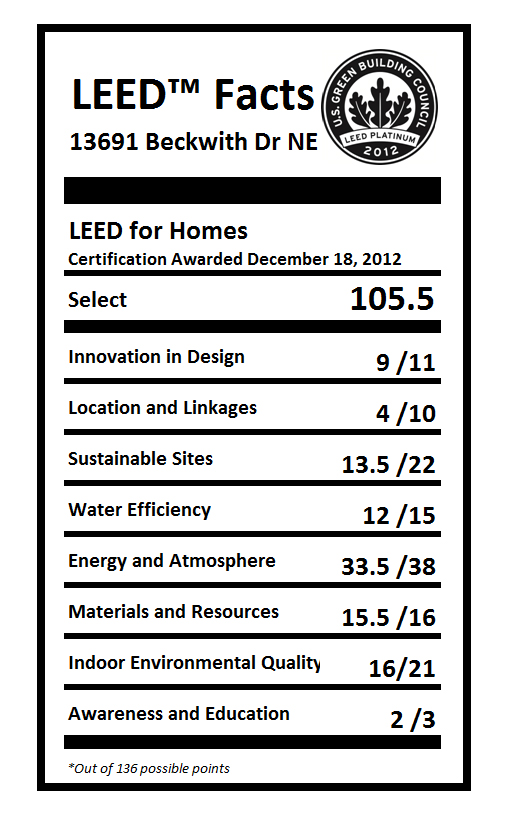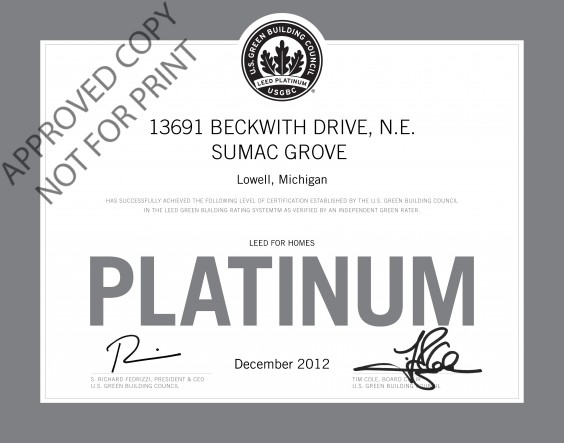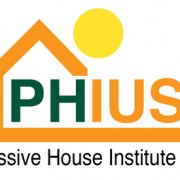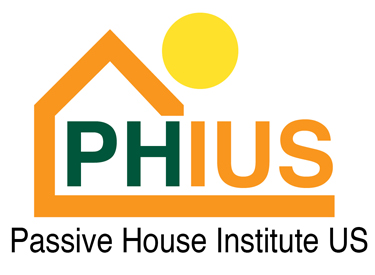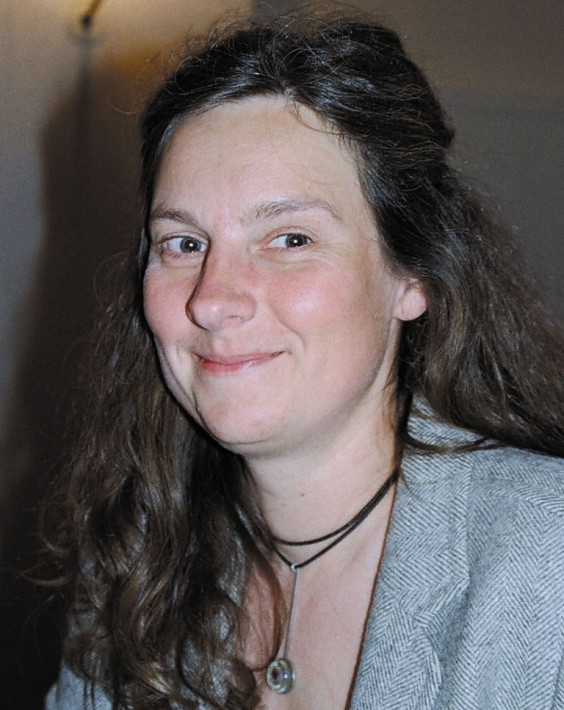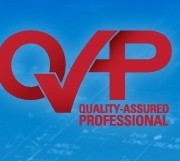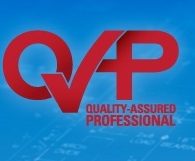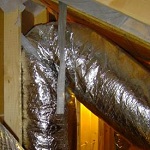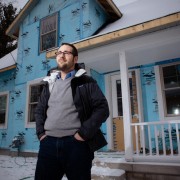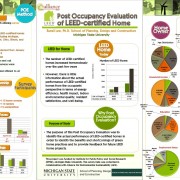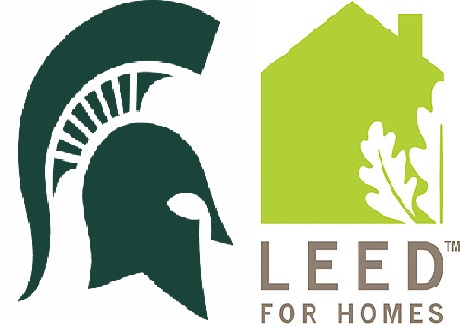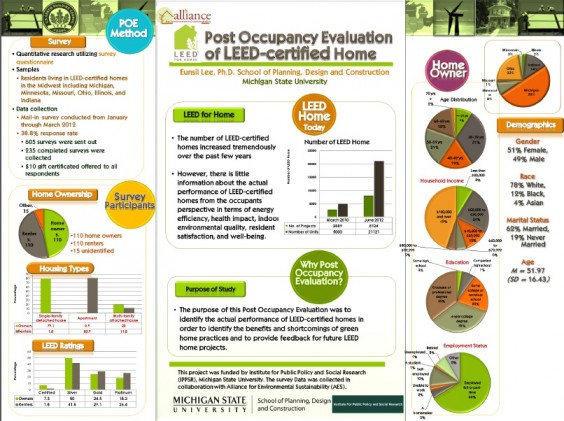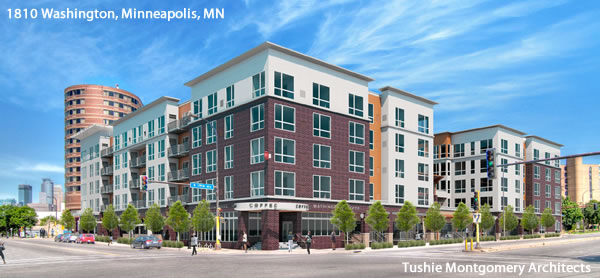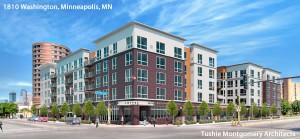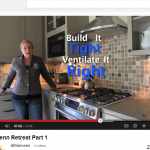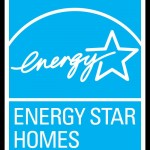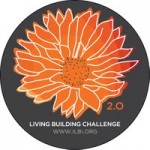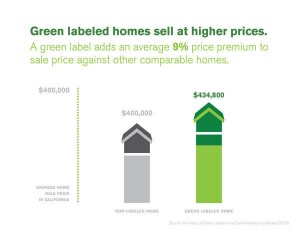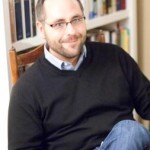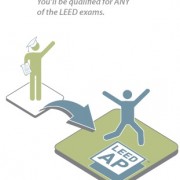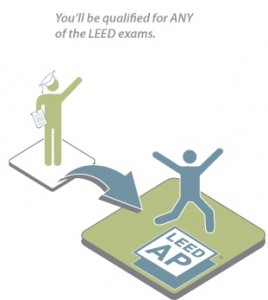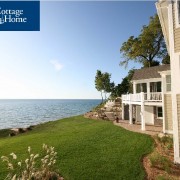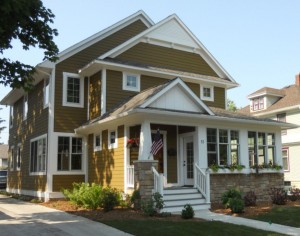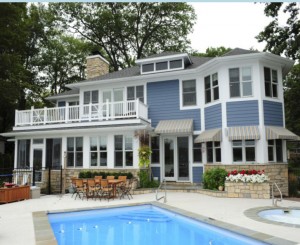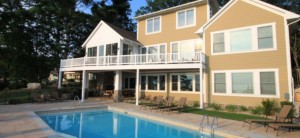A local nonprofit organization that educates and trains homeowners, builders, architects, and others in green building practices is growing.
The Green Home Institute () began in 2000 as a resource for sharing best practices in sustainable building. In 2005, they became one of only 12 organizations designated by the U.S. Green Building Council (USGBC) to support a LEED (Leadership in Energy and Environmental Design) for Homes pilot program. There are now 38 LEED for Homes providers around the country and primarily serves the Midwest. In addition to their location on Wealthy Street, they also have staff in Chicago, Cincinnati, and Indianapolis.
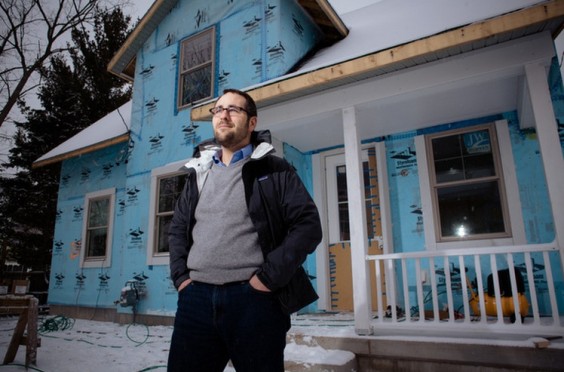
Recently, named Brett Little as its new executive director and Jamison Lenz as its LEED for Homes Program Manager. Both men are graduates of the Aquinas College Sustainable Business program.
Little served as the administrative director at before getting promoted. He started as a volunteer, then became an intern, and later, an AmeriCorps VISTA employee. He and his wife Laura recently spent around $30,000 “greening” their 87-year-old home. Afterward, Little and his wife noticed a 50 percent reduction in their heat bills and their electric usage decreased by 30-60 percent as well. (You can read more about the Littles’ greening experience in a previous Rapid Growth article here.)
Lenz’s position was created with a grant from the Home Inspector General, a residential energy inspection company operated by President and Founder Michael Holcomb. Before joining the team, Lenz was a volunteer and later, an AmeriCorps VISTA employee at the Habitat for Humanity, where he helped with LEED construction administrative work.
Lenz will assist with client documentation and residential LEED consulting services, while Little will mostly focus on launching new initiatives.
With these recent staff changes, is implementing more programs in addition to the time currently spent educating people and organizations interested in the LEED for Homes program.
The way LEED for Homes works is that each registered project must have a third party Green Rater to handle the onsite verification. Green Raters ensure specific conditions have been met on the LEED for Homes checklist. Based on how many points the project has achieved, the home can earn the basic certification level on up to the highest level of Platinum LEED certification.
Additionally, energy performance testing must be done by a Home Energy Rating System (HERS) Rater, which many Green Raters do as well. The greater a home’s heating and cooling efficiency is, the lower the HERS number and the more LEED points earned.
The LEED for Homes certification also takes a holistic approach to building so features such as being located within the city and near bus routes add points. If a person can walk to where they need to go and not use a car, that helps improve the environment.
Lenz says that living in a LEED-certified home is “more than just lower energy bills, it’s also about having a healthy environment where you can raise your family and be connected to the community in which you live.”
Builders, contractors, or homeowners typically work with the Green Rater on measures they can take to raise the number of points and level of certification. also consults with them and acts as a liaison between the Green Raters and the USGBC.
Some common tips to get more LEED points include adding a level of insulation to increase the HERS score or using only non-invasive plants in landscaping. Another simple way to raise points is to keep all plants at least two feet away from the house to prevent pest infestations.
When the home construction is completely finished and the Green Rater has turned in all required documentation, reviews it and then submits it to USGBC to obtain the final certification.
If that sounds like it’s a lot of work for builders and contractors, it often can be at first and it usually also costs two to three percent more to build a LEED-certified home. However, Little and Lenz assure their customers it gets easier with time and it’s definitely worth it.
“Building to LEED certification is not easy, nor should it be,” says Lenz. “But the more you build to this standard, it will soon become ingrained into your mindset and all that you do.”
Little adds that only about three percent of homes get LEED certified. “Most builders are not interested because they think it’s too hard,” he says.
typically works with contractors, builders, and architects and not many homeowners. In order for an existing house to become LEED for Homes certified, Little says “a homeowner pretty much has to gut their whole house, so it’s a big deal.”
Some of the advantages of having a LEED-certified home are lower utility bills, increased air quality, less illnesses and allergies, reduced impact on the environment, and a higher resale value.
“On average, we will spend 90 percent of our lives indoors, therefore it’s paramount that our buildings are healthy, efficient, and connected to the community,” says Lenz.
In 2012, hosted free monthly webinars, which were quite successful and attracted attendees from around the world. They’re planning on doing more in 2013 with topics ranging from the LEED process, green building leaders and products, indoor air quality, energy efficiency, and more.
, in partnership with Integrated Architecture, Habitat for Humanity, and the City of Grand Rapids, was recently awarded a $25,000 grant from Bank of America to transform the Wealthy Heights neighborhood into a LEED Neighborhood Development area. This will ensure healthy, affordable, efficient, and durable construction and remodeling practices. Chris Hall, formerly with Habitat, and Matthew VanSweden of Integrated Architecture worked with Little to acquire the grant.
is also now putting together a Living Building Challenge team. This “next generation of LEED for Homes” was developed by the International Living Future Institute.
Little says “if you thought LEED was hard,” the Living Building Challenge is even more complex. The certification is comprised of seven performance areas: site, water, energy, health, materials, equity, and beauty. Homes that qualify must have zero energy and water waste, be built with nontoxic materials, maximize health, blend with surroundings, and be socially just and beautiful.
The process is not simple and Little adds, “That’s why they call it a Challenge.”
Another initiative that is starting is green remodeling education and certification for homeowners who want to reduce energy costs. will teach the homeowners ways to become certified, though Little says this isn’t about minor repairs — “you really have to be committed.”
has also recently partnered with Advanced Energy in North Carolina to train HVAC professionals how to become Energy Star Version 3 credentialed installers and designers.
In addition to all of these new initiatives, the staff at has been very busy lately educating people on the LEED for Homes program and other green building tips.
“The market is up for new construction and we follow its success,” Little says.
They’ve been getting some help from students at GVSU, Aquinas, and MSU with video documentation, research, and surveys.
On top of the webinars, training, and consulting they offer, Lenz wants people to know they contact anytime with questions about anything having to do with greening a home.
“Our mission is to get the word out about healthier, more efficient homes,” he says. “It’s more than just about LEED, it’s about green communities.”
Full Article Here
As the editor of our Do Good section, Heidi writes about nonprofits, educational initiatives, and people and organizations making West Michigan a better place. She’s also a freelance writer, graphic designer, and marketing consultant who works out of her home while being pestered constantly by her two spoiled dogs. You can find her on Twitter at @HeidiSocial, but be aware that she likes her opinions strong and her humor warped
Photographs by Adam Bird
